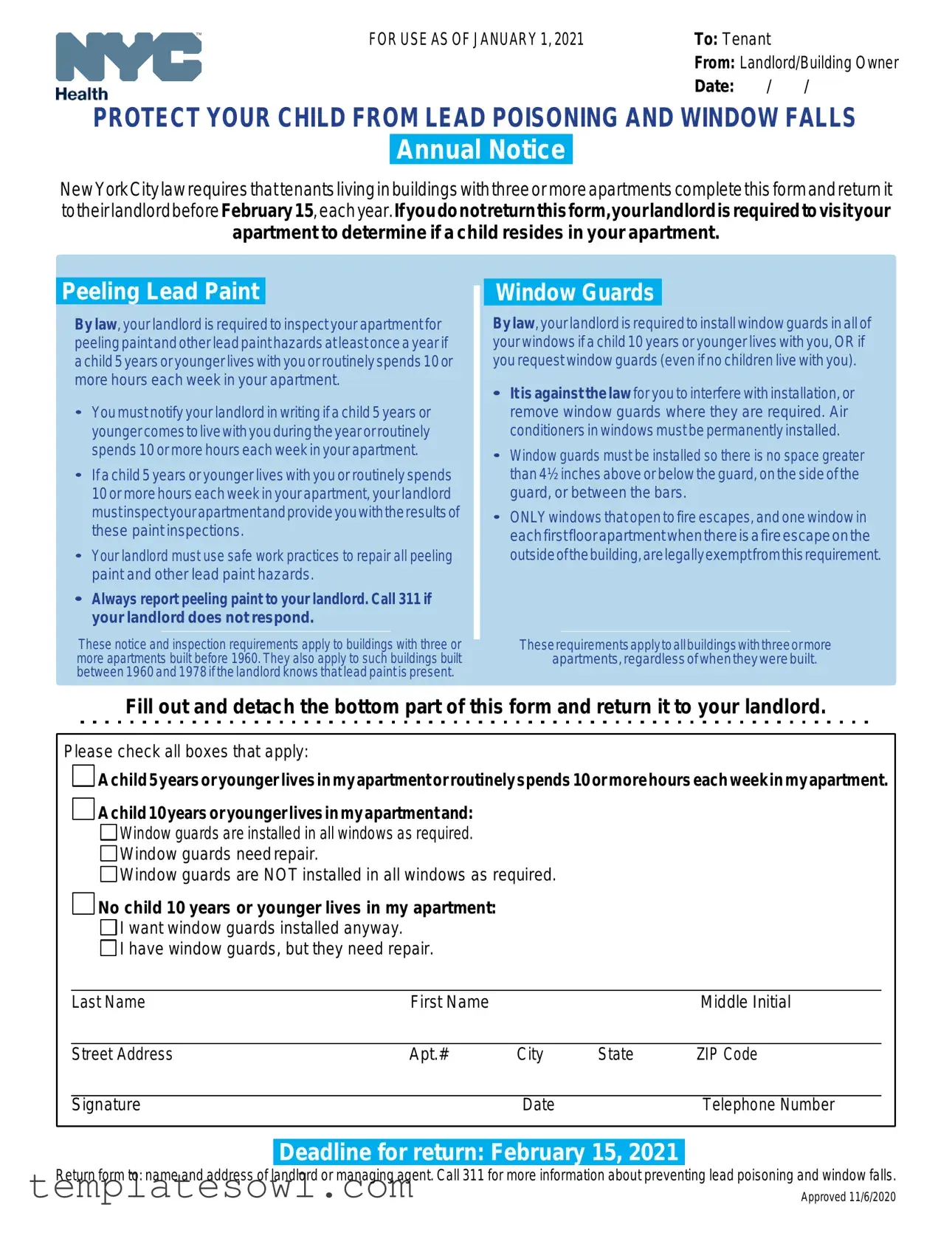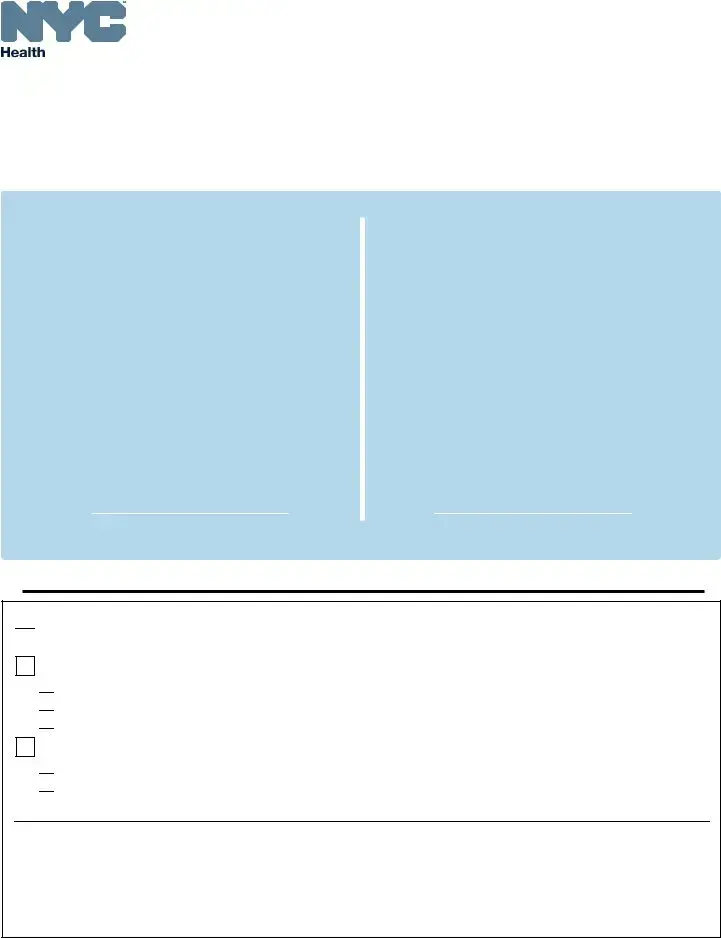What is the Annual Notice NYC form?
The Annual Notice NYC form is a document required by New York City law for tenants living in buildings with three or more apartments. It provides essential information about lead paint hazards and window safety, particularly concerning children living in or frequently visiting the apartment. Tenants must complete and return this form to their landlord by February 15 of each year.
Who is required to complete the Annual Notice NYC form?
Tenants residing in buildings with three or more apartments are required to complete the form. This is crucial if children 5 years or younger live in the apartment or if such children routinely spend 10 or more hours a week there.
What happens if I do not return the form?
If you do not return the form by the deadline, the landlord must visit your apartment to confirm if a child resides there. This is to ensure safety measures are being followed to protect children from potential lead paint hazards and window falls.
What are my landlord’s responsibilities if there are children living in my apartment?
If a child 5 years or younger lives in your apartment or spends considerable time there, your landlord must inspect your apartment for lead paint hazards at least once a year. They are also required to repair any peeling paint using safe work practices and inform you of the inspection results.
Are there specific requirements for window guards?
Yes, window guards must be installed in all windows if a child 10 years or younger lives in your apartment, or if you request them regardless of whether children reside there. The guards must be secured properly with no openings greater than 4½ inches. Certain windows, such as those opening onto fire escapes, may be exempt from this requirement.
How should I notify my landlord if a child 5 years or younger comes to live with me?
You must inform your landlord in writing if a child 5 years or younger moves in with you during the year or spends substantial time in your apartment. Timely notification ensures that necessary inspections and safety measures can be implemented.
What to do if I see peeling paint?
You should report any peeling paint to your landlord immediately. If the landlord does not respond, contact 311 for assistance. It is important to address such issues promptly to protect resident health and safety.
What should I do if my window guards need repair?
If your window guards are damaged or require repair, you should notify your landlord as soon as possible. This is crucial for maintaining safety standards in the apartment, especially for children.
Where can I get more information about preventing lead poisoning and window falls?
You can call 311 for more information regarding lead poisoning prevention and window safety. They provide resources and guidance to help ensure the safety of children in your home.



 A child 5 years or younger lives in my apartment or routinely spends 10 or more hours each week in my apartment.
A child 5 years or younger lives in my apartment or routinely spends 10 or more hours each week in my apartment.
 Window guards are installed in all windows as required.
Window guards are installed in all windows as required.
 Window guards need repair.
Window guards need repair.
 Window guards are NOT installed in all windows as required.
Window guards are NOT installed in all windows as required.
 I want window guards installed anyway.
I want window guards installed anyway.
 I have window guards, but they need repair.
I have window guards, but they need repair.